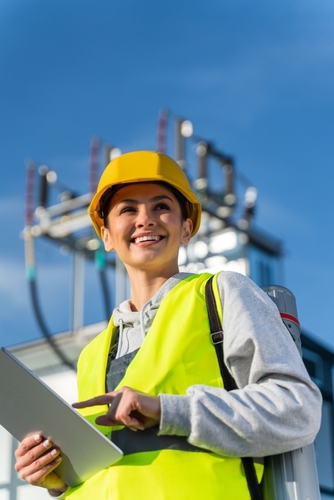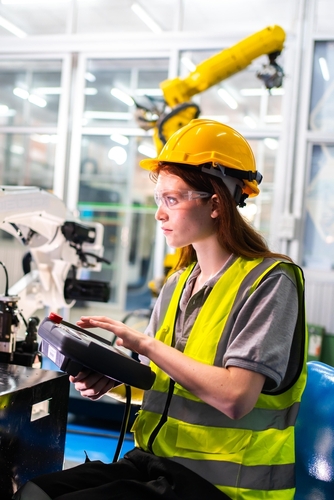Digital Twins: Bridging the Physical and Virtual
Digital Twin technology is rapidly gaining ground in the construction sector. At its core, a digital twin is a cyber-physical interface between the real-world and a virtual asset, be it a building, infrastructure system, or construction site. It continuously updates in real-time using data from IoT sensors, BIM models, and other operational systems, and uses physical models to predict events and impact to sites. One such example could be how the weather may impact the curing of concrete and the subsequent impact to the overall build progression. This evolving mirror of the physical environment allows project teams to simulate and monitor construction processes and building performance long after completion.
For example:
- During construction, digital twins help track how work is progressing, identify clashes where parts of the design conflict or don’t fit together properly, and improve sequencing by planning the right order of tasks so workflows smoothly without delays.
- Post-construction, they support facilities management by predicting maintenance needs and improving energy efficiency.
By combining real-time data with historical insights, digital twins empower decision-makers to test scenarios virtually before taking action on site, ultimately reducing costs, improving safety, and increasing sustainability. As adoption grows, digital twins are expected to become standard in complex developments, especially in smart city planning and large infrastructure projects, with an ever-growing marketplace of digital twins and physical models being made available to all industries.
Eyes and Legs on Site: How Drones and Quadruped Robots Are Transforming Construction?
Drones and quadruped robots are quickly becoming essential tools on modern construction sites. Drones offer a bird’s-eye view of progress, enabling real-time site surveys, inspections, and progress tracking with unmatched speed and accuracy. Their ability to collect visual and thermal data helps project managers detect issues early and make informed decisions.
Meanwhile, quadruped robots—agile, dog-like machines are being deployed to navigate complex terrain and gather data in environments that may be hazardous or difficult for humans to access. Equipped with cameras, sensors, and even LiDAR, they support tasks such as site scanning, safety monitoring, and progress documentation. Together, these technologies are reshaping the way construction teams monitor, manage, and optimise site operations.
AI: From Buzzword to Building Site Reality
According to McKinsey, global investment in AI surpassed $124 billion in 2024, with a 35% year-on-year growth in job postings related to AI—reflecting the accelerating demand and adoption across industries. In construction, AI is driving a crucial shift from reactive to proactive management, enabling teams to stay one step ahead by predicting and addressing potential issues before they escalate.
On construction sites, AI-powered tools such as computer vision are already being used to enhance safety. These systems can automatically detect when workers are not wearing the correct PPE or when hazardous conditions develop, prompting immediate action to prevent accidents. But AI's role doesn’t end at project completion. When paired with IoT sensors and digital twins, AI becomes a powerful tool for post-construction operations, helping monitor real-time building performance, optimise energy usage, and anticipate maintenance needs. This enables predictive maintenance strategies that reduce operational costs, minimise downtime, and prolong the life of critical assets.
Connectivity: Building on the Digital Foundation
Without strong, reliable connectivity, none of the technologies outlined above can function as intended. Whether it’s an IoT sensor transmitting data, a robot scanning site progress, or a manager accessing a digital twin, everything depends on consistent, high-performance and site-wide connectivity.
Today’s construction sites demand more than just standard coverage. They are complex, often remote environments where traditional connectivity methods alone simply aren’t enough. To eliminate downtime and maintain operational continuity, sites require a resilient, multi-layered connectivity approach, one that seamlessly integrates high-performance Wi-Fi for on-site communications and data access, along with Private 5G networks to support dense device usage, real-time video streaming, and mobile sensor arrays. To achieve this level of reliability, construction IT increasingly relies on the ability to combine multiple WAN types - cellular, fixed-line, and satellite.
At UK Connect, we integrate these essential layers into a seamless, end-to-end solution - minimising downtime and ensuring digital systems stay online in any site environment. In today’s construction landscape, connectivity isn’t just beneficial- it’s mission critical. Without it, digital transformation simply cannot scale.



.jpg)


















